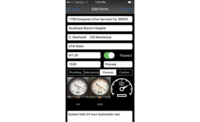Hackathon Project Turned Public Transit App Simplifies Route Planning

What began as a hackathon program that allowed users to design their own fantasy bus routes recently grew into a real-world, transit-planning application called Remix. The users are now mostly departments-of-transportation workers, and the lines they're designing are helping save time and money on real transit routes.
"We have been using Remix to help us develop maps that show proposed routes and service scenarios," says Vanessa Rauschenberger, director of planning at Gold Coast Transit, Camarillo, Calif. "It helped save us time in that we can create many scenarios of maps."
The application simplifies a lot of processes and data gathering that were previously done on Excel spreadsheets, says Rauschenberger. It inputs data, such as the proposed bus route and frequency of stops, and automatically calculates how much a certain route change will cost. Gold Coast Transit provides its schedules and routes in the so-called general transit feed specification (GTFS) format, which is popular among transit agencies; then, Remix uses that information to create a base map, Rauschenberger says. From there, her company can create new routes based on the existing ones and automatically see the population mix the new service reaches.
Another useful tool in Remix is a Google Maps kind of street view that allows transit planners to drop a person, which the app dubs "Jane," onto a city map. It then calculates how far Jane can get using public transit in a specified amount of time.
"We made a small version of the app, and it completely blew up," says Sam Hashemi, one of the co-developers and CEO of Remix, San Francisco. "Transit directors emailed us to say they've been waiting a long time for this and outlined, in detail, the 18 or 19 other things they wanted it to do."
Thousands of users and city officials around the world have designed fantasy bus routes, and more than 50 agencies are using the app to design new routes, including the New Orleans Regional Transit Authority and Alameda Contra-Costa Transit in Oakland, Calif.
"These are people with processes that technology is helping advance for the first time," says Hashemi. "That's why we're seeing such quick traction."
His company is eight months old.






